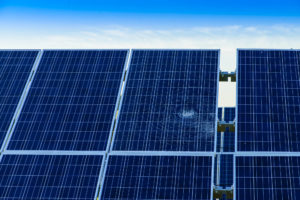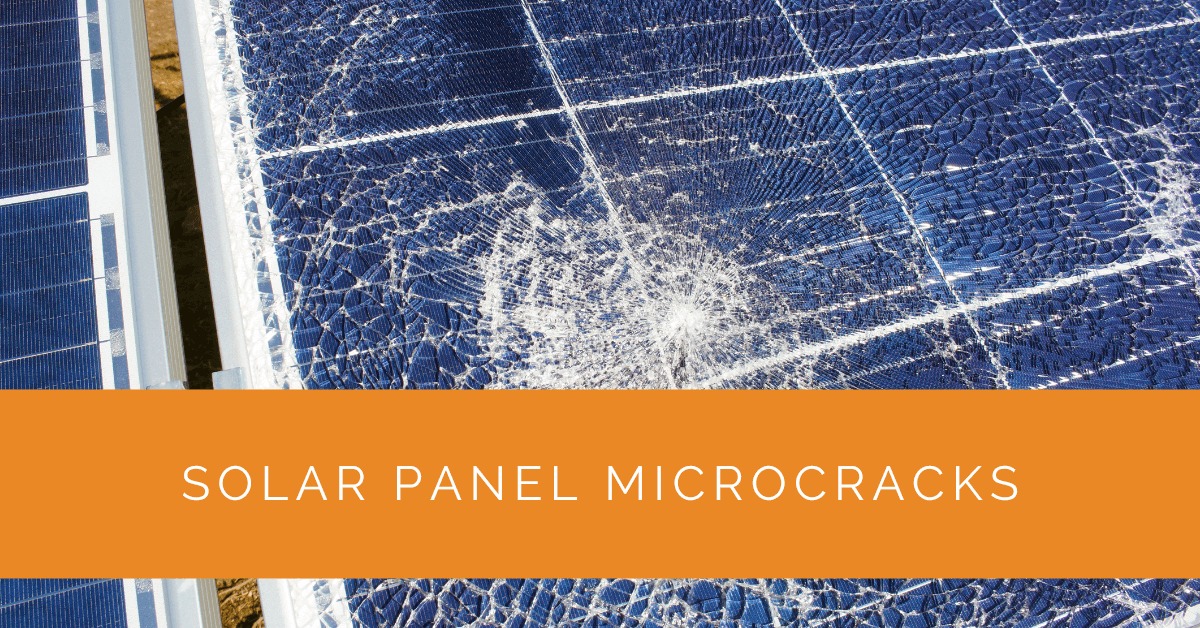Solar panels are at the forefront of renewable energy, providing clean and sustainable power from the sun. However, like any technology, they are not immune to wear and tear. One significant issue that plagues solar panels is the development of microcracks. This article will delve deep into what microcracks are, how they form, their impact on solar modules, and measures to prevent and address them.
Contents
- 1 Key Takeaways
- 2 What Are Microcracks in Solar Cells?
- 3 Detecting Microcracks in Solar Panels
- 4 Impact of Microcracks on Solar Panel Performance
- 5 Preventing and Mitigating Microcracks
- 6 Addressing Microcracks in Solar Panel Maintenance
- 7 Case Study: Addressing Microcracks in a Residential Solar Panel System
- 8 Expert Insights From Our Solar Panel Installers About Solar Panel Microcracks
- 9 Experience Solar Excellence with Us!
- 10 Conclusion
Key Takeaways
- Though tiny, Microcracks in solar panels can significantly impact their performance, leading to decreased efficiency and potential safety concerns.
- Detection methods such as electroluminescence and infrared imaging are crucial for identifying and addressing microcracks.
- Preventing microcracks through manufacturing quality control, proper installation, and routine maintenance is essential for maintaining the efficiency and longevity of solar PV systems.
What Are Microcracks in Solar Cells?
Defining Microcracks in Solar Cells
As the name suggests, microcracks are tiny cracks or fractures in the solar cells of photovoltaic (PV) modules. These cracks are often minuscule and invisible to the naked eye but can substantially impact solar panel performance.
Microcracks can form during various stages of a solar panel’s life cycle, from manufacturing to installation and daily operation. Some common causes include:
Causes and Formation of Microcracks
- Thermal Cycling: Solar panels are subjected to temperature fluctuations, and these constant expansions and contractions can lead to microcracks over time. During the day, solar panels heat up, and at night, they cool down. This temperature variation creates stress within the panel, potentially resulting in the formation of microcracks.
- Improper Handling: Mishandling during transportation, installation, or maintenance can introduce microcracks in the delicate solar cells. Even a minor impact or pressure on the cells can lead to microcracking, which may not be immediately visible.
- Cell Temperature: High cell temperatures, especially in sunny and hot climates, can exacerbate the formation of microcracks. When solar cells get too hot, they become more susceptible to cracking.
- Improper Lamination: Issues with the lamination process during manufacturing can create stress points that may eventually result in microcracks. Proper lamination is crucial to distribute stress across the panel evenly.
Detecting Microcracks in Solar Panels
Identifying microcracks is crucial for maintaining the efficiency and longevity of solar panels. There are several detection methods:
Visual Inspection Methods
- Electroluminescence Imaging: This technique captures images of solar cells while emitting light under an applied voltage. Microcracks appear as dark lines or spots, making them visible. Electroluminescence imaging is particularly effective in revealing hidden microcracks that might not be apparent through other inspection methods.
- Infrared Imaging: Infrared cameras can detect anomalies in cell temperature caused by microcracks, highlighting their presence. Microcracks can disrupt the even distribution of heat across a solar cell, creating detectable temperature variations.
Advanced Detection Techniques
- Acoustic Imaging: Using sound waves to detect microcracks by analyzing the acoustic emissions generated when the panel is subjected to stress. Acoustic imaging can identify microcracks early, helping prevent further damage.
- X-ray Imaging: High-resolution X-ray scans can reveal even the tiniest microcracks that might be missed through other methods. X-ray imaging provides an in-depth view of the internal structure of solar cells, making it a valuable tool for quality control and assessment.

Impact of Microcracks on Solar Panel Performance
Microcracks may be small, but they can lead to significant issues with solar panels:
Decreased Efficiency and Energy Output
Microcracks can create electrical pathways that bypass the inactive areas of a solar cell, resulting in reduced power output. This leads to decreased overall module efficiency. While a single microcrack may only have a minor impact, its cumulative effect on multiple cells within a module can be substantial.
Potential Safety Concerns
Microcracks can also pose safety risks. They may allow moisture to penetrate the cells, potentially causing corrosion or short circuits. This can compromise the safety of the entire PV system and create fire hazards.
Long-Term Effects on PV Modules
If left unaddressed, microcracks can worsen over time due to environmental factors and thermal cycling. This continuous degradation can significantly impact the lifespan of solar modules, leading to reduced energy production and potentially costly repairs or replacements.
Preventing and Mitigating Microcracks
Preventing microcracks is preferable, but mitigation measures are also essential:
Manufacturing Quality Control
Manufacturers must adhere to strict quality control processes to minimize the occurrence of microcracks during production. Proper handling and lamination are crucial to ensure solar cells are not subjected to undue stress. Advanced manufacturing techniques and rigorous testing can help identify and rectify potential issues early in production.
Proper Installation and Maintenance Practices
Solar panel installers must follow industry best practices to ensure panels are installed correctly and without damage. Proper handling during transportation and installation is critical to preventing microcracks. Routine maintenance should also include inspections for microcracks, allowing for timely repairs.
Role of Protective Coatings
Applying protective coatings to solar cells can help reduce the likelihood of microcracks forming and provide an additional defense against moisture infiltration. These coatings act as a barrier, shielding the cells from environmental stressors and helping to maintain their integrity over time.

Addressing Microcracks in Solar Panel Maintenance
Routine inspections and maintenance are vital for identifying and addressing microcracks:
Regular Inspections
Homeowners and PV system operators should schedule regular inspections by trained professionals. These professionals have the expertise and equipment necessary to detect microcracks accurately. Regular inspections can help catch microcracks early, preventing further damage and ensuring the system operates efficiently.
Repairing Microcracks
If microcracks are detected, immediate repair is essential. This can involve sealing the cracks to prevent moisture ingress and further degradation. Specialized repair kits are sometimes available, and professional technicians can perform the necessary repairs.
Replacing Damaged Solar Cells or Modules
In cases of extensive microcracking, replacing damaged solar cells or even entire modules may be necessary to restore system efficiency fully. While this can be a significant investment, it is crucial for maintaining long-term energy production and system reliability.
Case Study: Addressing Microcracks in a Residential Solar Panel System
Background
At Solar Panels Network USA, we pride ourselves on delivering top-notch solar solutions and ensuring the longevity and efficiency of every system we install. A homeowner recently approached us with concerns about a noticeable drop in their solar energy output. Our team was tasked with diagnosing and addressing the issue to restore the system’s performance.
Project Overview
Upon initial inspection, the solar panel system appeared to be in good condition, with no visible damage. However, the reported drop in energy output indicated an underlying issue. We suspected microcracks in the solar cells, a common but often overlooked problem that can significantly impact the efficiency of a solar panel system.
Implementation
Inspection and Diagnosis: We began with a thorough visual inspection, but given the invisible nature of microcracks, we quickly moved to advanced detection methods. Using electroluminescence imaging, we identified several microcracks in the solar cells. This technique allowed us to see the microcracks as dark lines or spots, which are otherwise undetectable to the naked eye.
Repair and Maintenance: Once the microcracks were identified, our team applied a specialized sealing solution to the affected areas. This solution prevents moisture ingress, which can exacerbate the problem. In cases where microcracks were more extensive, we replaced the damaged cells to ensure the system’s overall integrity and efficiency.
Post-Repair Monitoring: After completing the repairs, we installed a monitoring system to track the performance of the solar panels in real-time. This system allowed the homeowner and our team to ensure that the repairs were effective and that the system was operating at optimal efficiency.
Results
- Restored Efficiency: The immediate result of our intervention was a significant improvement in the solar panel system’s efficiency. The energy output returned to expected levels, confirming that the microcracks had been effectively addressed.
- Prevented Future Issues: By identifying and repairing the microcracks early, we prevented potential long-term damage and ensured the system’s longevity. This proactive approach not only restored performance but also enhanced the system’s durability.
- Cost Savings: The homeowner experienced immediate cost savings on their energy bills, thanks to the restored efficiency of their solar panel system. Additionally, the prevention of further damage means lower maintenance costs in the future.
Summary
This case study highlights the importance of regular maintenance and advanced inspection techniques in managing the health of solar panel systems. At Solar Panels Network USA, we understand that even tiny microcracks can have a significant impact on system performance. By utilizing cutting-edge detection methods and proactive repair strategies, we ensure that our clients’ solar panels operate at peak efficiency, providing sustainable and cost-effective energy solutions.
Expert Insights From Our Solar Panel Installers About Solar Panel Microcracks
Microcracks in solar panels are more common than most people realize. These tiny fractures can significantly reduce the efficiency of your system. Regular maintenance and inspections are crucial to identify and address these issues early.
Senior Solar Installer
Detecting microcracks early can save homeowners a lot of money in the long run. Using advanced techniques like electroluminescence imaging allows us to pinpoint even the smallest cracks before they become major problems.
Lead Solar Engineer
Proper handling during transportation and installation is key to preventing microcracks. Even minor mishandling can introduce stress points that lead to these tiny but impactful fractures.
Solar Energy Consultant
Experience Solar Excellence with Us!
Trust in Solar Panels Network USA, where our seasoned experts deliver top-quality solar solutions for homes and businesses nationwide. With a legacy of countless successful installations and a commitment to sustainable energy, we’re your reliable partner in the solar journey. Ready for a brighter, eco-friendly future? Call us now at (855) 427-0058 and harness the power of the sun!
Conclusion
Microcracks in solar panels are a persistent issue that can lead to power loss, degradation, and potential safety concerns. Understanding their causes, detection methods, and impact on solar module performance is crucial for maintaining the efficiency and longevity of solar PV systems. Preventive measures during manufacturing, proper installation, and regular maintenance can go a long way in minimizing the impact of microcracks and ensuring the continued success of solar energy generation. Remember, the devil is in the details when it comes to solar panel integrity, and addressing microcracks is a step toward a more sustainable future.
About the Author
Solar Panels Network USA stands at the forefront of solar energy solutions, driven by a team of seasoned solar engineers and energy consultants. With over decades of experience in delivering high-quality solar installations and maintenance, we are committed to promoting sustainable energy through customer-centric, tailored solutions. Our articles reflect this commitment, crafted collaboratively by experts to provide accurate, up-to-date insights into solar technology, ensuring our readers are well-informed and empowered in their solar energy decisions.

